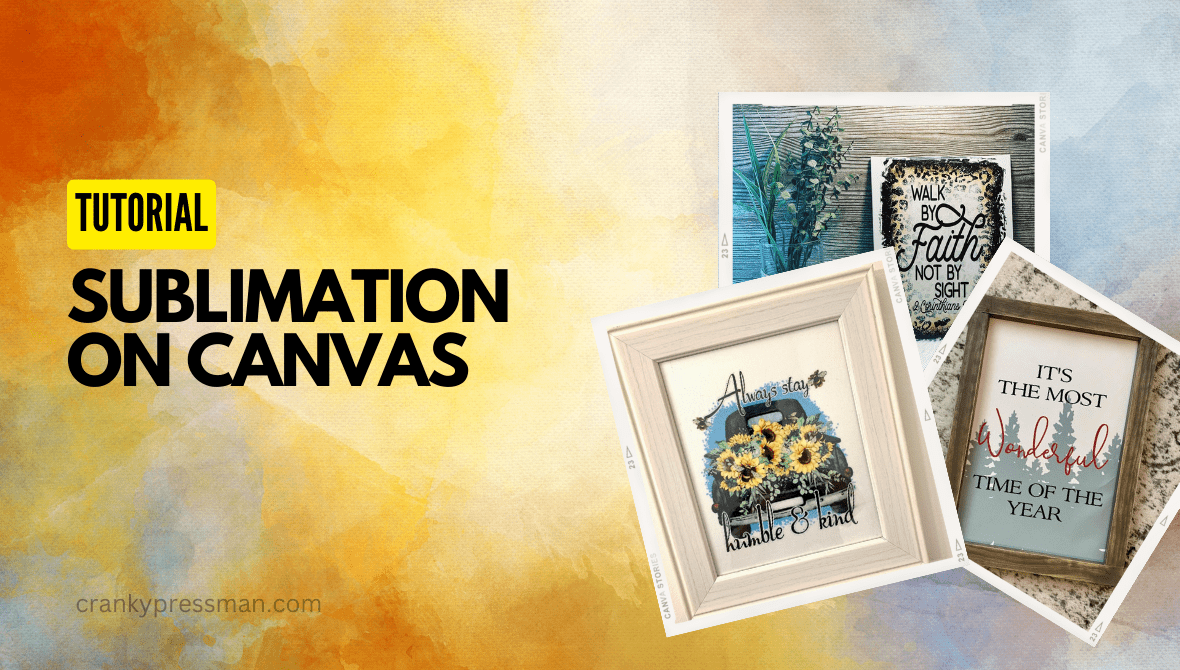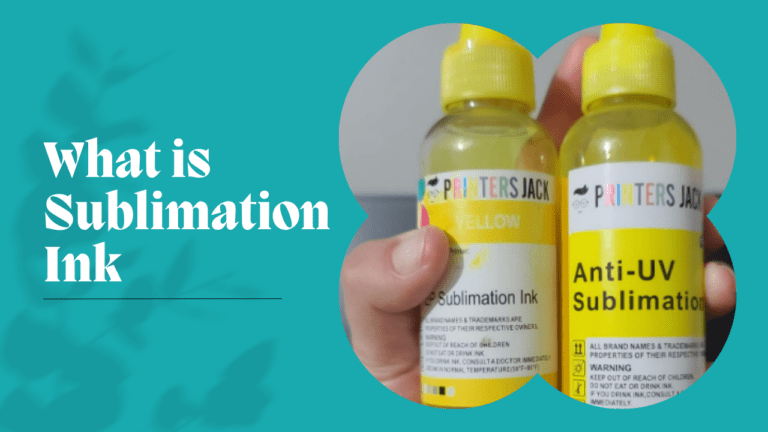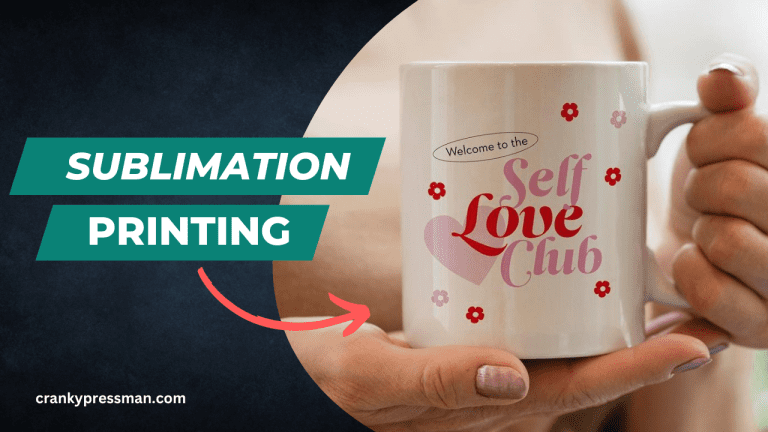Sublimation on Canvas: How to Create Custom Canvas Prints
I am always looking for new things to try with sublimation printing: it is a craft method that is as versatile as it is engaging. My latest experiment was in sublimation on canvas: whilst not the most common method of creating custom canvasses, it has it’s benefits. Especially if you already have the prerequisite sublimation printer and materials, you may be surprised to learn how little it takes to open up this new stream of creativity.
Today I thought I’d talk you through my method of sublimation on canvas, going into detail on everything you need and how to use it. So whether you are an experienced commercial-grade sublimation artist looking to add a new revenue stream, or a beginner seeking to experiment with their new equipment, read on to find out how to get started!
Sublimating on Canvas
It’s unlikely that anyone doesn’t know what a canvas is, but for those unfamiliar with the medium, here are some important details:
Canvas is a natural fabric, often comprised mainly of cotton, that has been used by artists for centuries. Stretched over a wooden frame, it is a great decoration solution for artwork or photographs.
However, the natural cotton (or sometimes linen) that is used in canvas sublimation isn’t generally suitable for sublimation. We tend to use synthetic fibers such as polyester for sublimating onto t-shirts or other fabric materials as the chemical bonding process is far more effective.
That doesn’t mean it’s impossible for you to sublimate on canvas, it just means we have to get creative. I’ve detailed below the two go-to options for how to supplement your sublimation process for canvas prints.
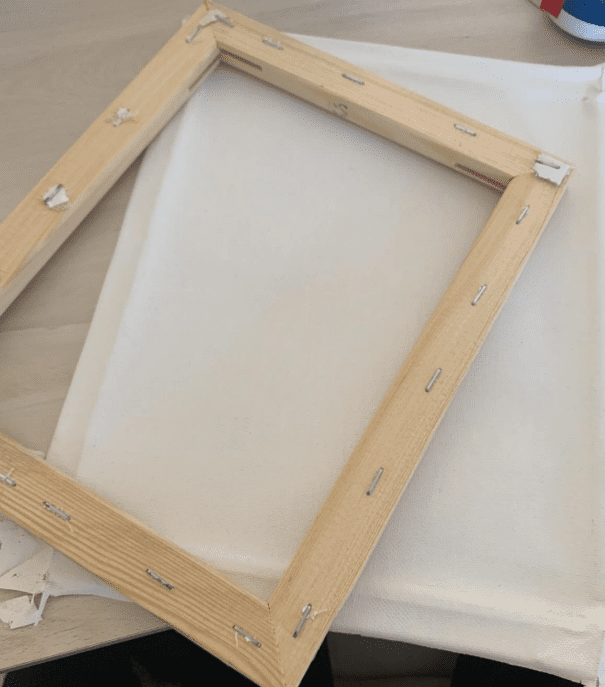
Sublimation on Canvas: Laminate Sheets
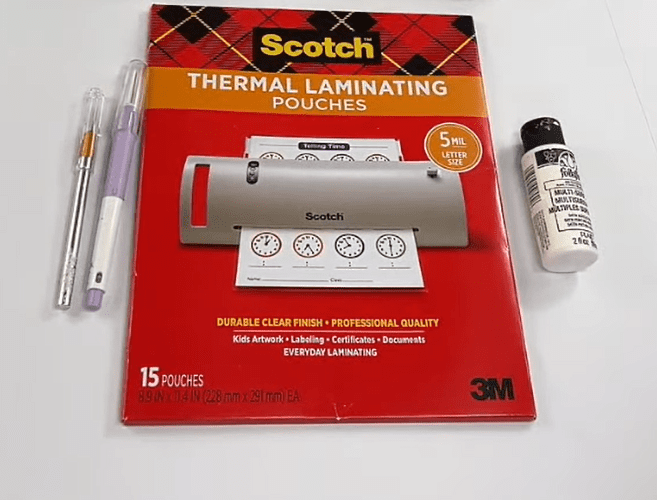
A laminate sheet serves as a great bonding agent for sublimation prints, bridging the gap between the sublimation paper and the canvas. It’s a bit more involved than standard sublimation printing, but the results speak for themselves.
Always run a test print before your main sublimation print, as it will help you notice any errors in the print process and make sure your design is transferred correctly.
First, print your sublimation design on the paper and let it dry completely. This can be done all through your usual method of printing, though I’d recommend a slightly more saturated ICC color profile for the best results.
Meanwhile, you need to pull apart the canvas from the frame if it is attached. Since they are normally tightly bound to the frame with staples, it will be tough work to pull apart each pin – so use scissors to carefully cut around the staples. Cut the canvas from all four sides and separate it from the canvas frame.
Use your heat press machine on a low-ish temperature to remove any creases or wrinkles.
Once the canvas is clear of any wrinkles, preheat your heat press machine settings to 385°F, at medium pressure.
Lay the pressed canvas on the table and place the laminate sheet on it. Ensure the dull side is in contact with the canvas and the glossy side is on the top. Cut out the excess laminate sheet to match the canvas dimensions.
Align the canvas and laminate in your heat press machine and press it for 20 seconds. If any wrinkles develop, give it another pass for around 10 seconds. Set the canvas aside to cool off. Whilst that cools down, heat your press up to 400°F.
Your sublimation print should be dry by now, so now’s the time to align it on the canvas. Use heat-resistant tape to fix the position, and reduce the chance of errors.
Once your heat press is ready, place your canvas-laminate-sublimation print into the press for 60 seconds. Once done, carefully remove it and allow it to cool.
Always wear heatproof gloves when sublimation printing, to avoid the risk of serious burns or other injuries.
Once it’s cooled, peel away the sublimation paper and you should be left with a glossy sublimation design on canvas. If needed, realign the canvas in the frame and use a glue gun or staples to line it up. Once the glue is dry, you have your sublimation print on canvas!
Sublimation on Canvas: Sublimation Spray
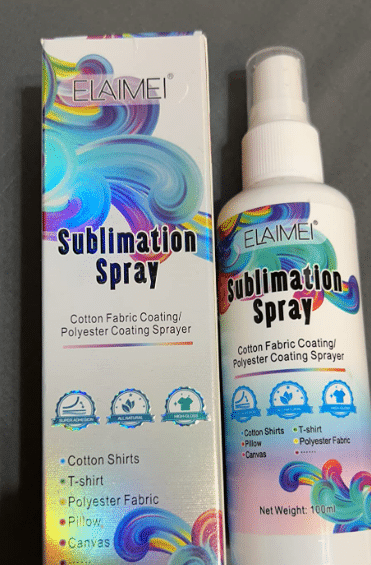
Sublimation spray is the other major means by which you can sublimate on canvas, and it’s a little easier than using a laminate sheet. Preparation steps are the same as with a laminate sheet: make sure your design is dry and remove your canvas from the frame if necessary.
Preheat your heat press once again to 385°F Once you’ve laid out your canvas cleanly, spay the canvas with an even coating of your choice of sublimation spray. Place it in your heat press for 15 seconds.
Make sure to ensure the canvas is as evenly coated as possible.
Once cooled, repeat the process with a second coating, placing it in the press for another 15 seconds. Once cooled, lay the canvas out on a flat surface (again, giving the canvas an extra 10 seconds for any wrinkles). Heat your press up to 400°F.
Apply your sublimation paper on top of the canvas, ensuring it’s aligned. Once again, use heat-resistant tape to secure it in place. Place a sheet of butcher paper over the sublimation paper to avoid it making direct contact with the heated element.
Press the canvas for 40 seconds. Once cooled, peel away your sublimation paper and you have your design. Since the sublimation paper is in direct contact with the canvas, the result is not glossy. You will get a pristine sublimation print on the canvas.
Sublimation on Canvas: PVC Canvas
This is more a sidenote than a full-fledged method, but it’s worth mentioning that there are manufacturers offering a PVC canvas material in a number of forms, which is much more suitable for sublimation as it’s capable of taking the high-heat requirements of heat press machines.
This is less like your traditional canvas print, however, and more suited for posters – and there are more efficient means of printing those. It is a worthwhile method for sublimation printing images onto banners or large posters, so it may be useful for some commercial sublimation print artists.
FAQs
Generally, your heat press machine should be set to 400°F for the best results sublimating on canvas.
A substrate is simply another term for whatever material you are using in your sublimation process. Since sublimation can be done on anything from hoodies to mugs, it’s an easier way of describing the material used.
Final Word
Sublimation on canvas is a fairly straightforward process if you know how to do it. With a little bit of practice, I found it to be a great way to create unique canvas gifts for friends or family. Hopefully, with a little patience and elbow-grease, you can get the same results.
For all kinds of tricks on how sublimate onto different materials – including niche options like vinyl – stay tuned with me here at Cranky Press Man!

